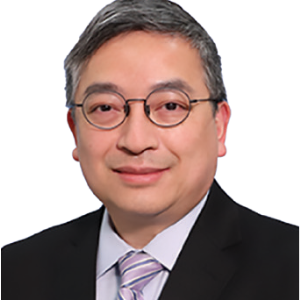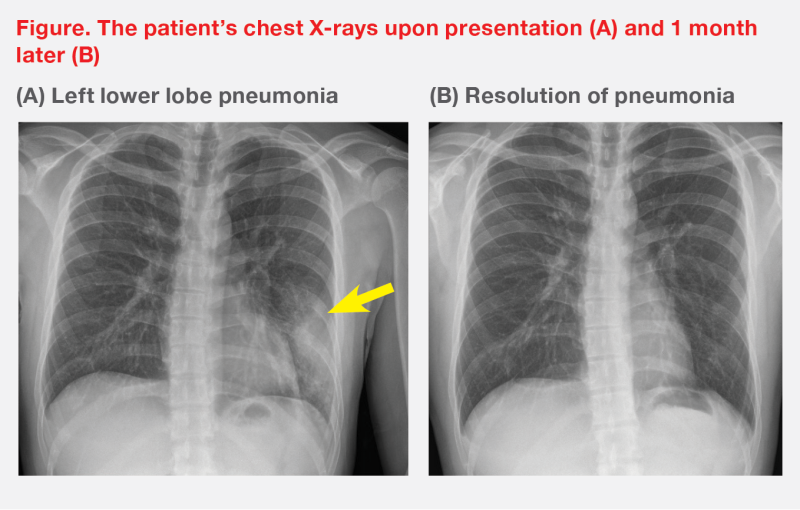Unstable angina triggered by RSV infection in a patient with pre-existing CVD





Presentation, history and treatment
A 57-year-old male lorry driver, who was an ex-chronic smoker and had underlying chronic diseases, was hospitalized due to a 3-day history of fever, cough, and shortness of breath in April 2025.
The patient had multiple comorbidities, including type 2 diabetes (T2D), dyslipidaemia, hypertension, and coronary artery disease (CAD), which were well controlled with empagliflozin 10 mg daily, metformin 1,000 mg BID, rosuvastatin 20 mg daily, losartan 100 mg daily and aspirin 80 mg daily.
Respiratory specimen from the patient tested positive for respiratory syncytial virus (RSV) and Haemophilus influenzae on polymerase chain reaction assay. Chest X-ray revealed pneumonia in the left lower lobe of his lungs. (Figure) The patient was given symptomatic treatment, and his secondary bacterial infection was treated with an antibiotic.

On day 2 of hospitalization, the patient began to experience short bouts of chest pain. Corresponding serial electrocardiography showed transient and reversible ST segment depression in leads V3 and V4. Serial troponin assay results were unremarkable. Subsequent CT coronary angiography showed stable CAD with moderate mid-left anterior descending artery stenosis. The patient was diagnosed with unstable angina and managed with medical therapy.
Subsequently, the patient’s respiratory symptoms and fever gradually subsided, and he did not have recurrence of chest pain. He was hospitalized for 5 days and is currently in stable condition. Chest X-ray 1 month later showed resolution of pneumonia. (Figure)
Discussion
Our patient with underlying CAD and other comorbidities was hospitalized for severe RSV and H. influenzae infections as well as secondary bacterial infection. During this period, he experienced unstable angina, likely induced by the heightened stress and inflammation caused by the two infections. Fortunately, with early medical attention and good control of underlying chronic diseases prior to the index hospitalization, he recovered quickly.
Recently published studies emphasize the bidirectional relationship between chronic illnesses (eg, cardiovascular disease [CVD] and T2D) and respiratory viral infections (eg, influenza and RSV). Older age and comorbidities predispose patients to severe infections, which in turn lead to exacerbation of pre-existing CVD and/or underlying conditions, resulting in acute complications, such as stroke or MI. This creates a vicious circle of deterioration and functional decline.1-6
A retrospective US study found that 37 percent of patients hospitalized with RSV experienced CV events during the high-risk period (of 1–28 days from admission), with congestive heart failure (CHF) being the most common event followed by atrial fibrillation and MI (25, 13 and 9 percent, respectively). Of these, 44 percent had no prior history of CAD. Furthermore, the risk of CV events remained elevated for at least 6 months following hospitalization.2
In Hong Kong, a territory-wide retrospective study in adults hospitalized for RSV infection or influenza between January 2016 and June 2023 found that patients with RSV infection had significantly higher risks of inpatient mortality, severe respiratory failure, secondary bacterial pneumonia, and acute kidney injury vs those with influenza (p<0.001 for all). These results were consistent for patients aged ≥60, <60, and 50–59 years.4
A local public health impact study demonstrated a substantial burden of RSV infection and its sequelae. It is estimated that among 2,236,600 adults aged ≥60 years in Hong Kong, 65,159 symptomatic acute RSV infection cases would occur annually, resulting in a projected annual economic burden of approximately HKD 569 million.7
Another modelling study on the same cohort found that compared with no vaccination, vaccinating 1,080,278 of these adults once with the recombinant adjuvanted RSV vaccine (RSVPreF3) would prevent 31,717 symptomatic RSV cases, 29,100 outpatient visits, 5,985 hospitalizations and 253 deaths over 3 years, assuming the same vaccination coverage as for influenza in the same age group.8
Real-world observational studies among US adults aged ≥60 years (including those with immunocompromising and underlying conditions, especially cardiopulmonary disease) have shown RSV vaccine effectiveness of 72–83 percent in the first season of use, providing significant public health benefit through reduced RSV-associated Accident & Emergency (A&E) visits, hospitalizations, and critical illness.9
RSV infection prevention and recommendations
The US Centers for Disease Control and Prevention (CDC) Advisory Committee on Immunization Practices (ACIP) recommends a single dose of RSV vaccine in all adults aged ≥75 years, those aged 50–74 years with certain chronic medical conditions, moderate or severe immunocompromise, severe obesity, and those who may be at increased risk of severe RSV disease.10,11
In Hong Kong, RSVPreF3 is approved for use in adults ≥60 years old to prevent RSV-related lower respiratory tract disease, and those 50– 59 years of age who are at increased risk of RSV disease.12 According to the Centre of Health Protection’s Scientific Committee on Vaccine Preventable Diseases, elderly persons (especially those aged ≥75 years or living in residential care homes) may receive RSV vaccination for personal protection, as an individual decision under informed consent in consultation with their doctor.13
The latest European Society of Cardiology (ESC) clinical consensus statement advocates vaccination as a new form of CV prevention and acknowledges that “in an era of increasing recognition of prevention as crucial for reducing CVD burden, vaccinations could become a foundational pillar of preventive strategies alongside other established measures”.14
Severe RSV infection and associated complications impact not only elderly individuals, but also individuals with comorbid illnesses. Vaccination is an effective preventive measure against RSV-related morbidity and mortality. A multipronged approach is therefore needed to increase vaccination uptake among the elderly and the vulnerable. These measures include timely review and update of local scientific recommendations, educating doctors, increasing public awareness, and, ideally, a government-subsidized vaccination programme. While all doctors should participate in recommending vaccination, a proactive approach by cardiologists, specifically, will help maximize the beneficial effects of vaccination for high-risk populations.